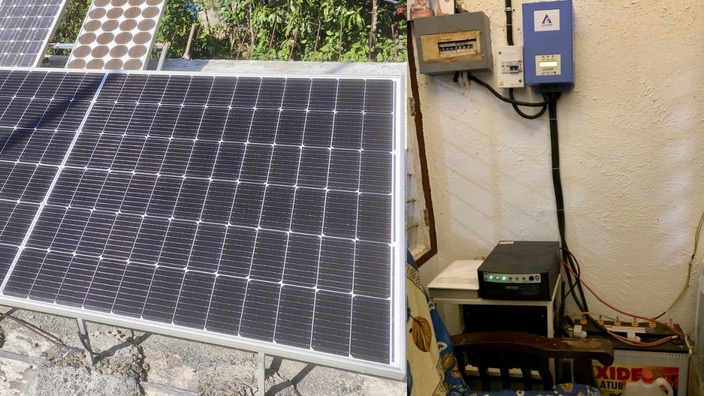Connecting Solar Batteries in Series and Parallel
When connecting solar batteries, the decision to wire them in series or parallel depends on the desired outcome for your system, such as voltage and capacity. Here’s the difference between the two methods:
- Series Connection:
- Voltage: In a series connection, the voltages of the batteries add up, while the capacity (amp-hour rating) remains the same as a single battery. For example, if you connect two 12V batteries in series, the total voltage will be 24V, but the capacity will still be that of one 12V battery.
- Use Case: A series connection is ideal when you need to increase the voltage to match the requirements of your inverter or other equipment. For instance, if your system requires a higher voltage, connecting batteries in series is the way to go.
- Example: Two 12V batteries in series = 24V system (12V + 12V).
- Parallel Connection:
- Capacity: In a parallel connection, the voltage remains the same as a single battery, but the capacity (amp-hour rating) increases. For example, if you connect two 12V batteries in parallel, the voltage stays at 12V, but the total amp-hour capacity is doubled.
- Use Case: Parallel connections are used when you need more capacity (i.e., longer battery life), but the voltage requirement remains the same.
- Example: Two 12V batteries in parallel = 12V system, but double the capacity in amp-hours (e.g., 100Ah + 100Ah = 200Ah)
Combination (Series-Parallel):
- Sometimes, you might need both increased voltage and capacity. In such cases, you can use a combination of series and parallel connections. For example:
- You connect two 12V batteries in series to create a 24V system.
- Then, you connect multiple sets of 24V series-connected batteries in parallel to increase the capacity.
Key Considerations:
- Battery Matching: Always use batteries of the same voltage, capacity, and age when connecting in series or parallel. Mismatched batteries can lead to inefficient charging or even damage.
- Charge Controller: Ensure your charge controller is compatible with the voltage and capacity of your battery bank.
- Series Connection Example:
You have two 12V batteries, each with a capacity of 100Ah.
- Voltage: In a series connection, the voltage of the batteries adds up.
- 12V + 12V = 24V
- Capacity: The capacity stays the same as one battery (100Ah).
- The total capacity = 100Ah
Result:
- System Voltage: 24V
- System Capacity: 100Ah
Scenario: This setup is useful if you need a 24V system to match your inverter or equipment. But the battery capacity (100Ah) remains the same, meaning you’ll have 100Ah of energy storage at 24V.
- Parallel Connection Example:
You have two 12V batteries, each with a capacity of 100Ah.
- Voltage: In a parallel connection, the voltage remains the same.
- Both batteries stay at 12V.
- Capacity: The capacities add up.
- 100Ah + 100Ah = 200Ah
Result:
- System Voltage: 12V
- System Capacity: 200Ah
Scenario: This setup is useful if you need a 12V system but want to increase your battery capacity to 200Ah, which means you’ll have a longer runtime before needing to recharge.
- Series-Parallel Combination Example:
You have four 12V batteries, each with a capacity of 100Ah.
Step 1: Series Connection
- Connect two 12V batteries in series:
- 12V + 12V = 24V (battery set 1)
- 12V + 12V = 24V (battery set 2)
Step 2: Parallel Connection
- Now, connect these two sets of 24V batteries in parallel:
- 24V + 24V = 24V (Voltage remains 24V)
- 100Ah + 100Ah = 200Ah (Capacity adds up)
Result:
- System Voltage: 24V
- System Capacity: 200Ah
Scenario: This combination is ideal if you need a 24V system with increased capacity (200Ah), allowing you to store more energy while maintaining a higher voltage for your inverter or other equipment.
Quick Summary of Results:
| Connection Type | Number of Batteries | Voltage (V) | Capacity (Ah) |
|---|---|---|---|
| Series | 2 x 12V, 100Ah | 24V | 100Ah |
| Parallel | 2 x 12V, 100Ah | 12V | 200Ah |
| Series-Parallel | 4 x 12V, 100Ah | 24V | 200Ah |

